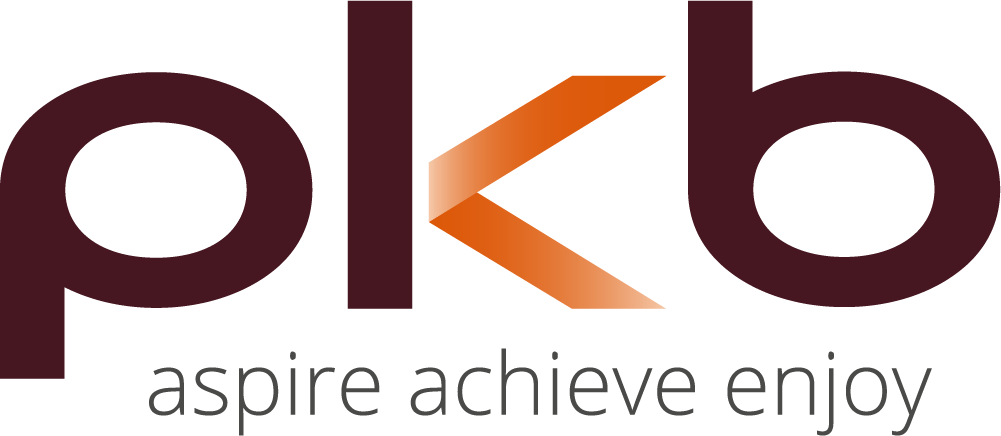Everything you need to know about taxes in 2018/19 including the current personal allowance threshold, pension contributions, capital gains tax, VAT and more.
Personal allowances and tax reliefs
The personal allowance for the current tax year is £11,850. Any non-savings income above this is taxed at rates between 20% and 45% depending on your income (19% to 46% in Scotland).
A higher marginal tax rate may be payable between £100,000 and £123,700 when the personal allowance is gradually withdrawn. This gives an effective marginal rate of 60% (61.5% in Scotland) in this band for non-savings and savings income.
You may be able to transfer £1,190 of your personal allowance to your spouse or civil partner if neither of you is a higher-rate taxpayer.
Generally speaking, it’s relevant when one spouse or civil partner is not able to use all of their personal allowance.
Tax on savings
The personal savings allowance allows basic-rate taxpayers to receive up to £1,000 of savings income tax-free. Higher-rate taxpayers can get up to £500 of savings income, without any tax being due.
There is no relief for additional-rate (45%) taxpayers.
The first £2,000 of income from dividends in 2018/19 is tax-free, while income from dividends that exceed this amount is taxed at rates of 7.5%, 32.5% or 38.1%.
Scottish tax rates only apply to non-savings, non-dividend income so the same rates apply to Scottish taxpayers.
Planning
Things to consider:
- Is everyone in your family taking full advantage of their personal allowance? If not, you could benefit from the transferable marriage allowance.
- Can you utilise any unused allowances this tax year?
- What can you do to take advantage of marginal tax rates and reduce the slice taxable at a higher rate?
- Is it better to use tax-free alternatives instead of receiving a bonus or a salary increase?
- Is your dividend strategy as tax-efficient as it could be?
- Could you take advantage of the rent-a-room relief which for individuals, is £7,500 or £3,750 for joint-owners?
ISAs
Adults can invest up to £20,000 in an ISA while a junior ISA of up to £4,260 is available for those aged 17 or under.
Growth, income and withdrawals from an ISA are free of income and capital gains tax. The value of an ISA will however form part of your estate for inheritance tax purposes.
ISAs are normally readily accessible, subject to scheme rules.
It’s also possible, as part of the £20,000 ISA allowance, to invest £4,000 in a lifetime ISA which receives an annual government bonus of up to 25% of your savings.
You must be over 18 and under 40 to open a lifetime ISA, which can be used on the purchase of a first home or to fund retirement. Further scheme rules and early withdrawal penalties apply.
Help-to-buy ISAs allow individuals over the age of 16 to save up to £200 a month towards their first home. Savers can also deposit a lump sum of up to £1,000 when they set up their account.
The money will earn interest and will also qualify for a 25% bonus (up to £3,000) from the government, providing the funds are used to buy a first home.
Planning
- If you don’t already have an ISA, should you start one this tax year?
- Should you use the maximum tax-free investment allowance?
Pension contributions
There are limits to how much you can invest in a pension scheme before a tax charge is payable.
To qualify for personal tax relief, a pension contribution must be made by – or on behalf of – a UK individual.
Tax relief for pension contributions may be restricted by reference to net relevant earnings and the annual allowance.
The annual allowance is currently £40,000 for those with yearly income from all sources, plus pension contributions of less than £150,000.
There is a minimum annual allowance of £10,000, in most cases, for individuals with total income plus employer pension contributions of £210,000 or more.
Complex rules also apply to individuals with a ‘threshold income’ above £110,000 which is why it’s always advisable to seek pension advice before investing in a scheme.
Provided you had a pension fund during the previous three years, it is possible to carry forward any unused allowances.
There is a lifetime allowance, which is currently £1.03 million. If your entire pension savings exceed this amount, you may be liable to a tax charge when you start to draw benefits.
Planning
- If you’re over 55, you may be able to start taking pension drawdown, even if you are still working – but there are serious tax implications for doing so.
- Defined benefit schemes are likely to have restrictions and possibly costs, if the pension is taken early.
Other aspects to consider include:
- When are you planning to retire and what’s your ideal income?
- Should you increase your pension contributions?
- When considering if you have exceeded the annual allowance, have you reviewed both your employee and employer pension contributions?
- Have you fully considered the potential inheritance tax benefits of maximising your pension fund?
- Ensure your letter of instruction to the trustees of the fund in the event of your death before drawing your benefits has been reviewed. It’s essential that this is also considered when updating your will.

Inheritance tax
Generally, inheritance tax is due on death, at a rate of 40% if the inheritance threshold of £325,000 is exceeded.
There is a £125,000 residence nil-rate band which is available to each spouse or civil partner subject to certain conditions.
These include leaving the home, or a share of the home, to direct descendants such as children or grandchildren.
This residence nil-rate band will rise annually until April 2020 when it reaches £175,000, meaning the individual available nil-rate band reaches a maximum of £500,000, or £1 million for married couples or civil partners. The residence nil-rate band is tapered for estates in excess of £2 million.
The percentage of any unused nil-rate band from the first death may be transferred to the surviving spouse, allowing up to double the nil-rate band applicable at the date of the second death.
Gifts or transfers made within seven years of death are also added back into the estate.
These are liable to inheritance tax, but may be subject to some exemptions as well as a tapered reduction for inheritance tax on transfers made between three and seven years.
Planning
- Do you have an up-to-date will that reflects your wishes?
- Are you happy with the choice of executors?
- Are you taking advantage of exemptions, such as the annual £3,000 exemption, gifts out of income and gifts on marriage or civil partnership?
- Should you consider using a discounted gift trust which allows the gifting of a lump sum into a trust while retaining income for life?
- Do you have surplus assets that you can give away and thus reduce the value of your estate that is chargeable to inheritance tax?
- Should you consider altering the spread of your investment portfolio into more inheritance-tax-efficient products?
Capital gains tax
Ordinarily, each person is entitled to make a tax-free gain up to £11,700 (or up to £5,850 for trusts).
Married couples and civil partners each have their own £11,700 exemption, with gains above this threshold usually taxed at a rate depending on income.
Where taxable income is less than the UK base rate limit of £34,501, or £31,581 in Scotland, the capital gains tax (CGT) rate for gains up to the spare basic-rate band allowance is 10%. After this it rises to 20%. The standard rate applicable to a trust is 20%.
A higher rate of CGT applies to residential property and carried interest which are taxed at rates of 18% and 28%. The rate applicable to disposals of similar assets by trustees is 28%.
For business owners, entrepreneurs’ relief gives rise to a lower rate of 10% for qualifying gains. The maximum reduction in tax is £1 million.
Planning
- Have you used your annual exemption of £11,700?
- What can be saved by maximising the advantage of family tax-free exemptions?
- Can you transfer an asset that’s going to be sold in the future into a joint name?
- If a gain is going to be realised, are there other assets which are standing at a capital loss that can be used to reduce your gains?
- If tax is due, are there ways of deferring or rolling over the gain?
- If you have substantial assets outside of an ISA, could you arrange them to generate a tax-free income?
- Have you reviewed your buy-to-let portfolio to explore how you can reduce your tax liability from property income?
- Would it be beneficial to incorporate buy-to-let properties into a company?
- If you have two properties you have used as a home, have you considered if your main residence election is on the property with the largest gain?
Non-UK domicile taxation
From the 6 April 2017, non-domiciled individuals are deemed UK-domiciled for tax purposes if they have been a UK resident for 15 of the past 20 years.
This means that the remittance basis is available only for a limited period of time, even where the charge is paid.
Where you are non-UK domiciled and have been in the UK for more than 10 years, but less than 15, consider your long-term plans if you have significant overseas assets and wealth.
Inheritance tax is charged on any UK assets owned directly by a non-domiciled individual (irrespective of their domicile) and also on UK residential property when this is held indirectly by a non-domiciled individual through an offshore structure.
This, for example, might be where the property is held in a trust or a company.
Overseas assets may become subject to UK inheritance tax too, once an individual becomes deemed UK domiciled and careful planning should therefore be considered before this happens.
Tax credits
Individuals on low incomes may be eligible to claim tax credits or universal credit (existing claimants will move to universal credit by the end of March 2022).
The calculations for these benefits involve determining three figures:
- Your maximum benefit (the amount you would receive if you had no income at all)
- Your net income (earnings after tax, national insurance and pension contributions have been deducted)
- Your allowance (the maximum amount of income you can earn and still receive the maximum benefit)
As some income is disregarded, it’s possible that someone could receive the maximum benefit even if they have a small income.
A notional income may be added if you have capital above a certain threshold.
If your income is above your allowance, a percentage of the excess is deducted from the maximum benefit.
Planning
- Check to see if you qualify for these benefits as they can sometimes be payable even to those with what might seem to be fairly high incomes.
- As capital can be treated as income that reduces benefit, it may be sensible to give away funds or to spend them upgrading your property (property value is not regarded as capital).
- Be aware however, there are rules designed to counter blatant attempts at capital reduction.

Corporation tax
The main rate of corporation tax is 19% until the 31 March 2020. From 1 April 2020, this rate will be reduced to 17%.
Corporation tax self-assessment requires companies to work out their own tax liability as part of their return and account for the ‘self-assessed’ liability to corporation tax.
Planning
- A very important tax-reduction strategy is to bring qualifying capital expenditure forward to take advantage of the 100% annual investment allowance.
- On the 1 January 2019, the allowance increased from £200,000 to £1 million for all qualifying expenditure until 31 December 2020. Transitional rules may apply for chargeable periods spanning these dates.
- Taxable profits are typically reduced by employers making pension contributions, while self-invested personal pensions are popular with many company owner-directors.
Business deductions
Business owners are entitled to claim deductions from income for costs which are incurred wholly and exclusively in running the business.
Determining how this rule applies in practice can be a challenge. In most circumstances, a deduction may not be claimed in respect of depreciation.
Deductions in the form of capital allowances are available for some expenditure on qualifying capital expenditure however.
Planning
- Directors’ bonuses can be claimed as an in-year deductible cost so long as they are paid within nine months after the company year-end. The entitlement to the bonus (but not the exact amount) must be established before the accounting date.
- Pension contributions must be paid before the year-end to get tax relief for that accounting period.
- Salaries can be made to family members as long as they’re justifiable and at commercial rates.
- Other potentially tax-efficient ways of extracting profits include dividends and benefits in kind.
Entrepreneurs’ relief
Entrepreneurs’ relief provides a tax break for disposals by smaller business owners.
It charges a reduced capital gains tax rate of 10% on disposals up to the lifetime limit of £10 million, giving a potential tax saving of up to £1m. Complex rules apply to this relief so please seek advice to determine if it applies to you.
The relief is available on material disposals of business assets, which cover businesses operating as a sole trader, partnership or through a limited company.
It may not be available when a company is liquidated if the owner is involved in a similar business (whether a company, self-employment or a partnership) within two years of the distribution on winding up. These anti-avoidance rules also apply to other artificial arrangements.
Planning
- Capital gains tax liability is just one aspect of all the planning that goes into the wording of the final contract for sale.
- Maximising the sale value and looking carefully at the proposed sale structure helps to ensure the liability to capital taxes is not a penny more than absolutely necessary.
- There are a number of planning opportunities in this area, but there are also pitfalls if some shareholders do not qualify for this relief.
VAT
VAT is chargeable where taxable turnover is above £85,000 in the previous 12 months or you expect to make this value of supplies in the next 30 days alone.
There are schemes which simplify VAT accounting, including the cash accounting scheme, annual accounting scheme and the flat-rate scheme.
Planning
- Is it appropriate for you to use one of the schemes?
- Have you reviewed the use of the flat-rate scheme and taken appropriate action? This may include voluntary deregistration for VAT if trading under the deregistration threshold (£83,000).
- Are you claiming any ‘VAT bad debt relief’ you’re entitled to?
- Are you accounting for VAT on the fuel used for private motoring using the appropriate scale charge?
- Make sure you don’t reclaim VAT on cars (unless you are a car dealer or taxi company or provide certain pool or leased cars for employees) or on entertaining UK customers.
Penalties
The penalty regime covers income tax, corporation tax, VAT and inheritance tax.
If you miss the first income tax return filing deadline, you will receive a £100 fine.
After three months, the maximum penalty rises by £10 a day, up to a maximum of £900.
After six months, a further £300 or 5% of the tax due – whichever is the higher – is added. In some serious cases the penalty can be even higher than this.
There are also penalties to cover the notification of starting a business and filing returns and accounts at Companies House.
Penalty rates range from £150 for a private company filing the accounts not more than one month late, up to £7,500 for a public company filing accounts more than six months late.

Upcoming changes
New rules, rates and allowances which may affect your tax planning for 2019/20 will be coming into effect from 6 April 2019.
Personal allowance and threshold
The personal allowance for 2019/20 is £12,500 (this applies throughout the UK).
In England and Northern Ireland, the basic-rate band threshold will increase to £37,500.
This means that individuals who are entitled to a full personal allowance will not be liable to higher-rate tax in England and Northern Ireland until their total income exceeds £50,000 in 2019/20.
The national insurance contributions upper earnings limit will also increase to remain in-line with the higher-rate threshold.
In Scotland, the basic-rate threshold will increase to £24,944 in 2019/20 – but the higher-rate threshold has been frozen at £43,430 (subject to final confirmation in February 2019).
As a result, higher-rate taxpayers in Scotland face significantly higher income tax bills than their counterparts in the rest of the UK.
Capital gains tax
The annual allowance will increase to £12,000 for individuals and to £6,000 for most trusts.
ISAs
The overall annual ISA subscription limit remains at £20,000 while the junior ISA and child trust fund allowances will increase to £4,368.
Pensions
The pension lifetime allowance will increase by £25,000 to £1.055 million.
Vehicles
The van benefit charge will increase from £3,350 to £3,430 and the van fuel benefit charge will increase from £633 to £655.
Employees provided with fuel for private mileage in a company car will see the value of the multiplier used for calculating the cash equivalent of the fuel benefit increase from £23,400 to £24,100.
Important information
The way in which tax charges (or tax relief, as appropriate) are applied depends on individual circumstances and may be subject to future change.
ISA and pension eligibility depend on individual circumstances.
FCA regulation applies to certain regulated activities, products and services, but does not necessarily apply to all tax planning activities and services.
This document is solely for information purposes and nothing in it is intended to constitute advice or a recommendation.
While considerable care has been taken to ensure that the information contained in this document is accurate and up-to-date at the time of writing in January 2019, no warranty is given as to the accuracy or completeness of any information.
Let us help you
If you’d like help or further information about any of the matters covered in this document, please feel free to get in touch with PKB Accountants about our tax planning services.

To read news and blogs from Rebecca Austin, click here >>


